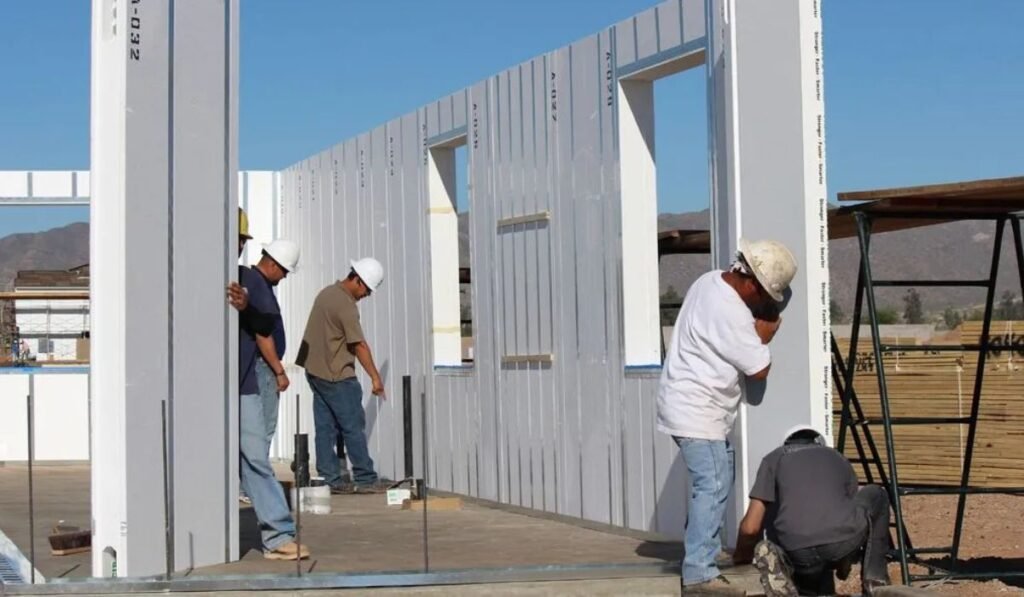In recent years, the construction industry has witnessed a transformative shift towards efficiency and reliability, with prefabricated concrete structures leading the way. Prefabricated systems, which involve creating building components off-site and assembling them at the construction site, have revolutionized how projects are executed. From constructing metal buildings packages with concrete to stunning high-rise structures, prefabrication is increasingly gaining popularity.
This system stands out because it drastically reduces construction time while maintaining quality. As developers and construction firms search for innovative and efficient building solutions, understanding the power and potential of prefabricated concrete becomes essential.
What is Prefabricated Concrete?
Prefabricated concrete refers to manufacturing individual concrete components in a specialized factory before transporting and assembling them on the construction site. This method diverges from the age-old practice of mixing and pouring concrete on-site, which can often be time-consuming and demand heightened labor costs.
In prefabrication, components are crafted precisely under controlled conditions, ensuring quality and consistency. This process shortens the overall construction timeline and raises the quality bar, as each element is checked meticulously before shipment. When integrated with metal building concrete services, prefabricated components offer a seamless solution for durable, efficient, and structurally sound construction—ideal for commercial, industrial, and agricultural applications.
Benefits of Prefabricated Concrete Structures
Time Savings
Time is construction money, and prefabricated concrete structures excel at saving both. By overlapping off-site fabrication with on-site activities, projects proceed more smoothly. The predictable production setting significantly reduces potential delays often encountered in traditional construction methods, such as weather-related stoppages.
Cost Efficiency
Cost considerations are often at the forefront of any construction project, and prefabrication helps manage expenses effectively. Manufacturing in bulk under standardized processes leads to less waste and fewer errors, translating to reduced material and labor costs. The long-term savings are palpable, as projects end on a budget more frequently with prefabricated systems.
Quality Control
Maintaining strict quality control measures in a factory setting is an invaluable advantage. Inconsistent craftsmanship and variability, more common in field conditions, can essentially be eliminated. Every prefabricated component undergoes rigorous testing and quality checks to ensure they meet precise specifications, resulting in higher structural reliability.
Applications Across Industries
Residential Buildings
Housing shortages and the drive towards sustainability have propelled prefabrication in the residential sector. Houses, apartments, and modular homes benefit from the quick turnaround times and consistent build quality of prefabricated concrete. This approach is particularly advantageous in rapidly developing urban areas where time and space are at a premium.
Commercial Construction
The commercial sector is not left behind; prefabrication shines in constructing expansive spaces like shopping malls and office complexes. Projects requiring robust and durable solutions leverage prefabricated elements to ensure they are functional and aesthetically pleasing. Prefabrication’s efficiency and predictability align well with the fast-paced needs of commercial construction.
Infrastructure Projects
Infrastructure projects such as bridges, tunnels, and highways prioritize durability and longevity, making prefabricated concrete an excellent choice. This approach meets and often exceeds the resilience and quality standards required in heavy-duty structures.
Technological Innovations Driving Prefabrication
As technology advances, so too does the potential of prefabricated concrete structures. Integrating 3D printing technologies allows for the creation of complex and precise components that were once challenging to manufacture. Furthermore, automation plays a critical role in enhancing the speed and reducing the labor intensity of production processes.
The construction sector is witnessing a technological revolution, with innovations enhancing and redefining current methods. A shift towards digitalization, including Building Information Modeling (BIM), has further fueled prefab construction precision, streamlining the design and implementation phases.
Challenges and Considerations
Despite its apparent advantages, prefabrication comes with its challenges. Transportation logistics can be complex, as moving large prefabricated slabs or sections demands meticulous planning and special equipment. Builders must also consider the upfront costs associated with setting up production facilities, though these can be offset over multiple projects.
Project managers and stakeholders need to weigh these considerations, ensuring proper planning and execution to realize the full benefits of prefabrication.
Environmental Impact and Sustainability
Sustainable construction practices are no longer optional; they are imperative. Prefabricated concrete structures align with sustainable practices by reducing waste and optimizing material usage. Recycling excess materials or using eco-friendly alternatives becomes more feasible in factories.
This thoughtful consideration of environmental factors ensures that the prefabrication approach supports the larger global initiative to reduce the construction industry’s overall carbon footprint, promoting a greener future for all.
Conclusion
In conclusion, prefabricated concrete structures are steering the construction industry toward a future of efficiency, cost-effectiveness, and sustainability. As technology advances and the demand for fast, reliable construction grows, industries will likely embrace prefabrication more fully. The promise of prefabricated concrete lies in its ability to blend innovative technology with traditional durability, crafting spaces that meet today’s needs while anticipating tomorrow’s challenges.
